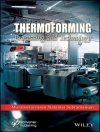The Art of Problem Solving in Organic Chemistry
The new edition of the classic textbook that has helped thousands of students understand and solve the complex mechanistic problems posed by organic reactions
The Art of Problem Solving in Organic Chemistry is a must-have workbook for students and professionals alike, offering step-by-step guidance on applying proven strategies and logical techniques to solve complex reaction mechanism problems. The book is organized in two sections: The Toolbox and the Problem Chest. The first part is presented in four chapters covering advanced contemporary issues of molecular structure and orbital configuration, stereoelectronic constraints, electron shifts, redeployment and arrow-pushing allowances and pitfalls, as well as functional groups roles and key intermediate species, all of which dominate the reaction mechanism scenario. These concepts are rounded up by a series of time-tested problem analysis strategies and thinking routes shown in flowcharts and illustrated by application to specific cases.
The Problem Chest puts together a set of 50 newly selected fully discussed mechanism problems of increasing difficulty, in which all the power of the Toolbox paraphernalia is put to work.
Now in its third edition, The Art of Problem Solving in Organic Chemistry retains the structure of previous editions, previously rated among the 30 best organic chemistry books of all time by Book Authority. More than 50 revised organic reaction mechanism problems are complemented by an entirely new set of problems, additional concepts and techniques, expanded coverage of applications in contemporary organic chemistry, embedded cases of the existing reaction pool taken from recent literature, and much more.
* Describes the principles, methods, tools, and problem analysis techniques required to solve organic reaction problems
* Extends the logic and strategy of the mechanistic approach beyond specific reactions and facts
* Discusses practical methods for improved problem solving for organic reaction mechanisms
* Explains tested strategies for analyzing the possibilities of reaction mechanisms between reactants and products
* Contains detailed appendices with definitions and examples of principles, reactions, mechanisms, and reagents
The Art of Problem Solving in Organic Chemistry, Third Edition is an essential volume for advanced undergraduates, graduate students, lecturers, and professionals looking to improve their performance in finding solutions to organic reaction problems. It is an ideal textbook for courses on organic reactions and problem analysis, as well as an excellent supplement for courses covering reactive intermediates and mechanisms of molecular transformations.
Зміст
Preface ix
Acknowledgements xiii
Where Does This Book Level Start, How Far Does It Take You? xv
Part I The Toolbox 1
1 Introduction to Problem Analysis in Advanced Organic Reaction Mechanism 3
1.1 Overview, 3
1.2 The First Three Steps in Problem Analysis, 4
1.3 Moving Beyond the Primary Answers, 7
1.4 Drawing a Preliminary Outline for Guidance, 7
1.5 Intuition and Problem Solving, 8
1.6 Summing Up, 9
1.7 Solution to the 14 –> 16 Conversion in Scheme I.5, 10
References and Notes, 10
2 Electron Flow in Organic Reactions 11
2.1 Overview, 11
2.2 Introduction, 12
2.2.1 A Word or Two on Notation, 13
2.3 Electrons in Covalent Bonding and Redeployment, 14
2.4 Practical Rules Governing Electron Redeployment, 15
2.5 Summing Up, 84
2.6 Organized Problem Analysis with the Tools Described so Far, 85
2.7 Supplementary Schemes: Solutions to Problems Embedded in this Chapter, 86
Notes, 89
3 Stereochemistry and Mechanism of Molecular Transformations 93
3.1 Overview, 93
3.2 Introduction, 94
3.3 Measuring Steric Hindrance, 102
3.4 Applications to Stereochemically Competent Reaction Mechanisms, 127
3.5 Stereochemistry in Bimolecular Reactions: Cycloadditions, 131
3.6 The Ultimate Stereo- and Enantio-Control: Oriented External Electric Fields (OEEFS), 139
3.7 Summing Up, 144
3.8 Supplementary Schemes, 145
Notes, 146
References, 146
4 Additional Techniques to Postulate Organic Reaction Mechanisms 149
4.1 Overview, 149
4.2 Take Your Time, 150
4.3 Use Clear and Informative Molecular Renderings, 150
4.4 Element and Bond Budgets, 150
4.5 Looking at Molecules From Different Perspectives, 152
4.6 Redraw Reactants Such That They Resemble Products, 155
4.7 Fragmentation Analysis (Fa): Dissecting Products in Terms of Reactants, 157
4.8 Oxidation Levels and Mechanism, 163
4.9 The Functionality Number (FN), 164
4.10 Combining Fragmentation Analysis and Functionality Numbers, 169
4.11 A Flowchart to Orderly Exploit the Strategies of this Chapter, 170
4.12 Summing Up, 171
4.13 Supplementary Reaction Schemes, 171
4.14 Solution to Problems Embedded in this Chapter, 172
References, 172
Part II The Problem Chest 173
Subject Index 389
Graphical Index 391
Про автора
Miguel E. Alonso-Amelot is Professor Emeritus of Organic and Ecological Chemistry at The University of the Andes (Universidad de Los Andes) in Mérida, Venezuela. He received his Ph D from the Department of Chemistry at Indiana University and has more than 45 years of teaching experience in the United States, Europe, and Latin America. He is the author of over 110 research articles and book chapters and four books, including the first two editions of The Art of Problem Solving in Organic Chemistry.












